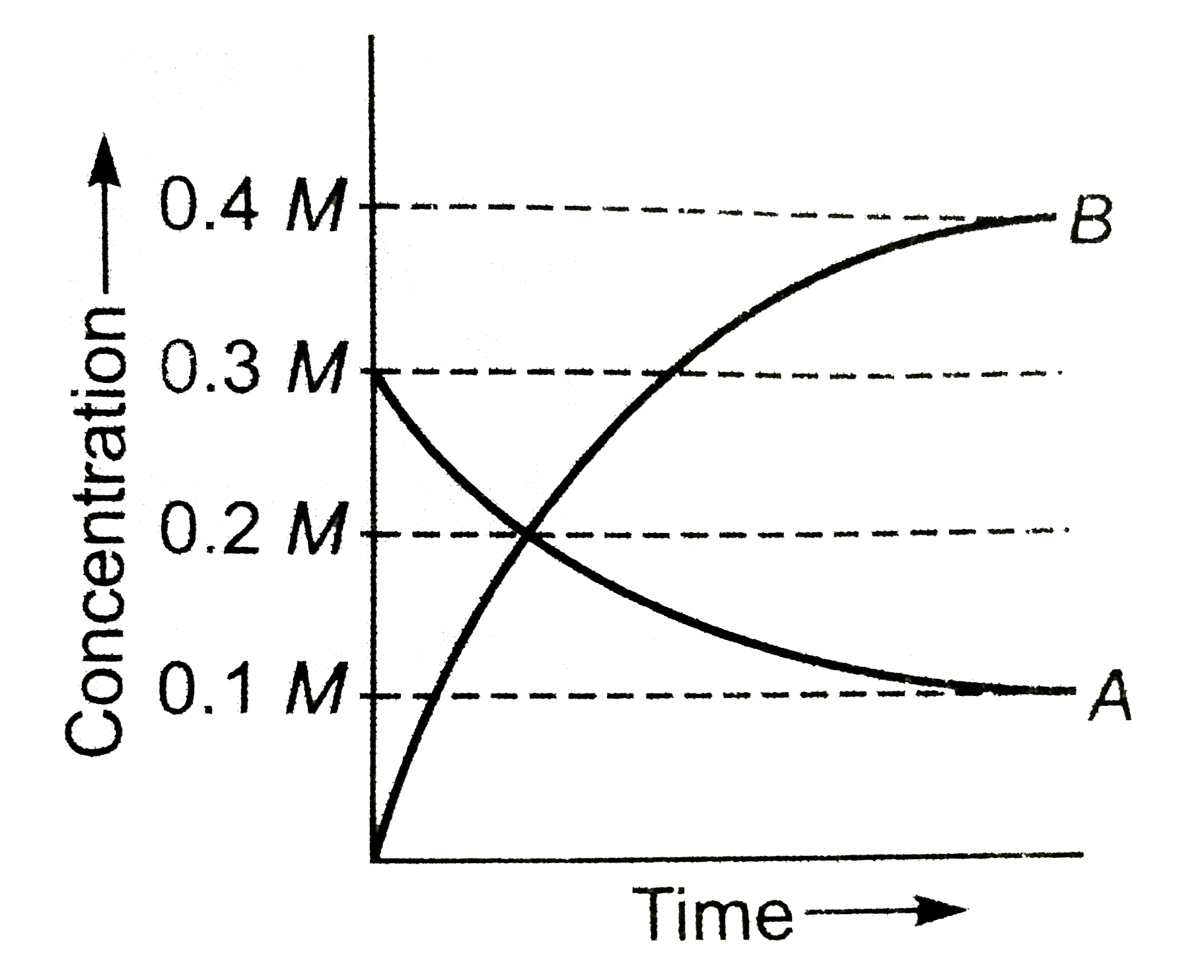The figure shows the change in concentration of species A and B as a function of time.
The equilibrium constant for the reaction is :

data insufficient
The correct Answer is:a
Step by step video, text & image solution for The figure shows the change in concentration of species A and B as a function of time. The equilibrium constant K_(c)for the reaction A(g)hArr2B(g) is : by Chemistry experts to help you in doubts & scoring excellent marks in Class 11 exams.
Topper's Solved these Questions
- BOOK - NARENDRA AWASTHICHAPTER - CHEMICAL EQUILIBRIUMEXERCISE - Level 1 (Q.93 To Q.122)1videos
CHEMICAL EQUILIBRIUM
- BOOK - NARENDRA AWASTHICHAPTER - CHEMICAL EQUILIBRIUMEXERCISE - Level 21videos
CHEMICAL EQUILIBRIUM
- BOOK - NARENDRA AWASTHICHAPTER - ATOMIC STUCTUREEXERCISE - Exercise273videos
ATOMIC STUCTURE
- BOOK - NARENDRA AWASTHICHAPTER - DILUTE SOLUTIONEXERCISE - Level 3 - Match The Column1videos
DILUTE SOLUTION
Similar Questions
Given the mathematical expression for the equilibrium constant Kc for the reaction.
2SO3(g)⇔2SO2(g)+O2(g)View SolutionA(G)+B(g)⇔C(g)+D(g)
Above equilibrium is established by taking A& B in a closed container. Initial concentration of A is twice of the initial concentration of B. At equilibrium concentraons of B and C are equal. Then find the equilibrium constant for the reaction, C(g)+D(g)⇔A(g)+B(g).View Solution
Knowledge Check
- Question 1 - Select One
The equilibrium constant Kp for the reaction H2(g)+I2(g)⇔2HI(g) changes if:
Athe total pressure changesBa catalyst is usedCthe amounts of H2andI2 changeDthe temperature changes - Question 2 - Select One
The unit of equilibrium constant Kc for the reaction A+B⇔C would be
Amol−1LBmolL−1CmolLDNo unit - Question 3 - Select One
The factor which changes equilibrium constant of the reaction
A2(g)+B2(g)→2AB(g) isATotal pressureBAmounts of A2 and B2CTemperatureDCatalyst.
In a chemical reaction , A+2BK⇐⇒2c+D, the initial concentration of B was 1.5 times of the concentrations of A , but the equilibrium concentrations of A and B were found to be equal . The equilibrium constant (K) for the aforesaid chemical reaction is :
View SolutionThe relation between KPandKC for the reaction A(g)+B(g)⇔C(g)+2D(g) is -
View SolutionThe reaction,
2A(g)+B(g)⇔3C(g)+D(g)
is begun with the concentration of A and B both at an intial value of 1.00 M. When equilibrium is reached, the concentration of D is measured and found to be 0.25 M. The value for the equilibrium constant for this reaction is given by the expression:View SolutionThe reaction,
2A(g)+B(g)⇔3C(g)+D(g)
is begun with the concentration of A and B both at an intial value of 1.00 M. When equilibrium is reached, the concentration of D is measured and found to be 0.25 M. The value for the equilibrium constant for this reaction is given by the expression:View SolutionFor the reaction, A(g)+2B(g)⇔2C(g) one mole of A and 1.5 mol of B are taken in a 2.0 L vessel. At equilibrium, the concentration of C was found to be 0.35 M. The equilibrium constant (Kc) of the reaction would be
View Solution
